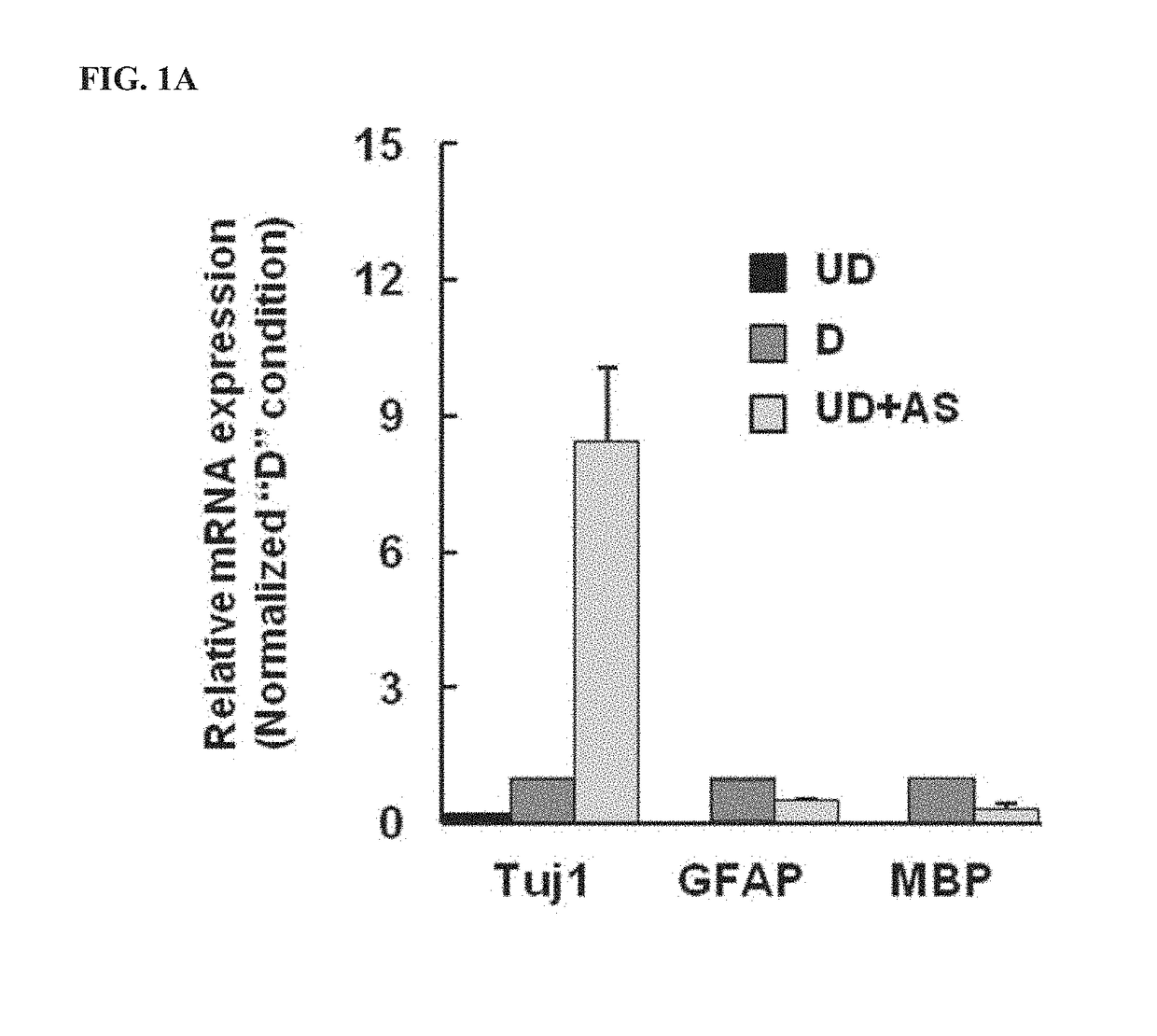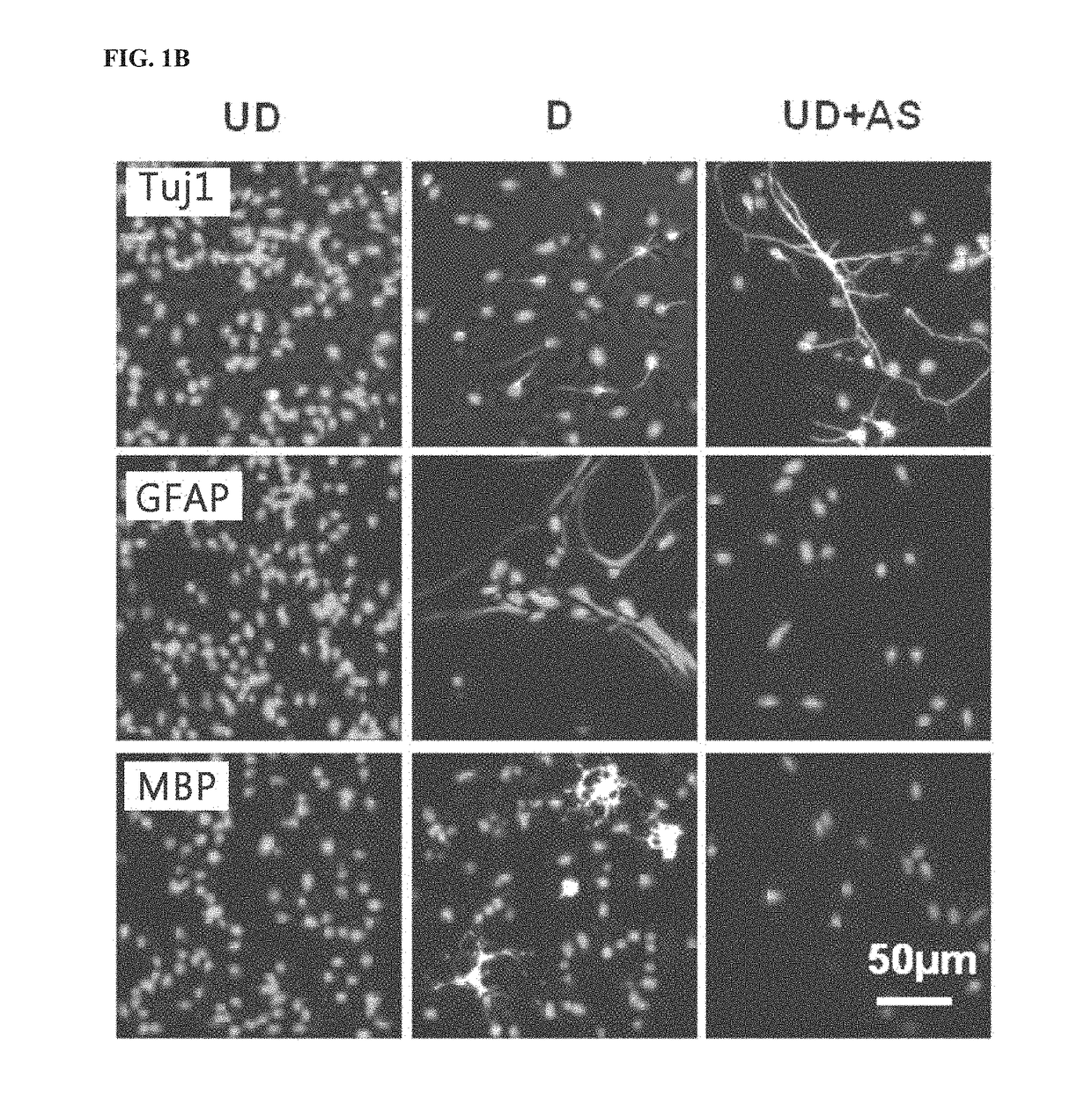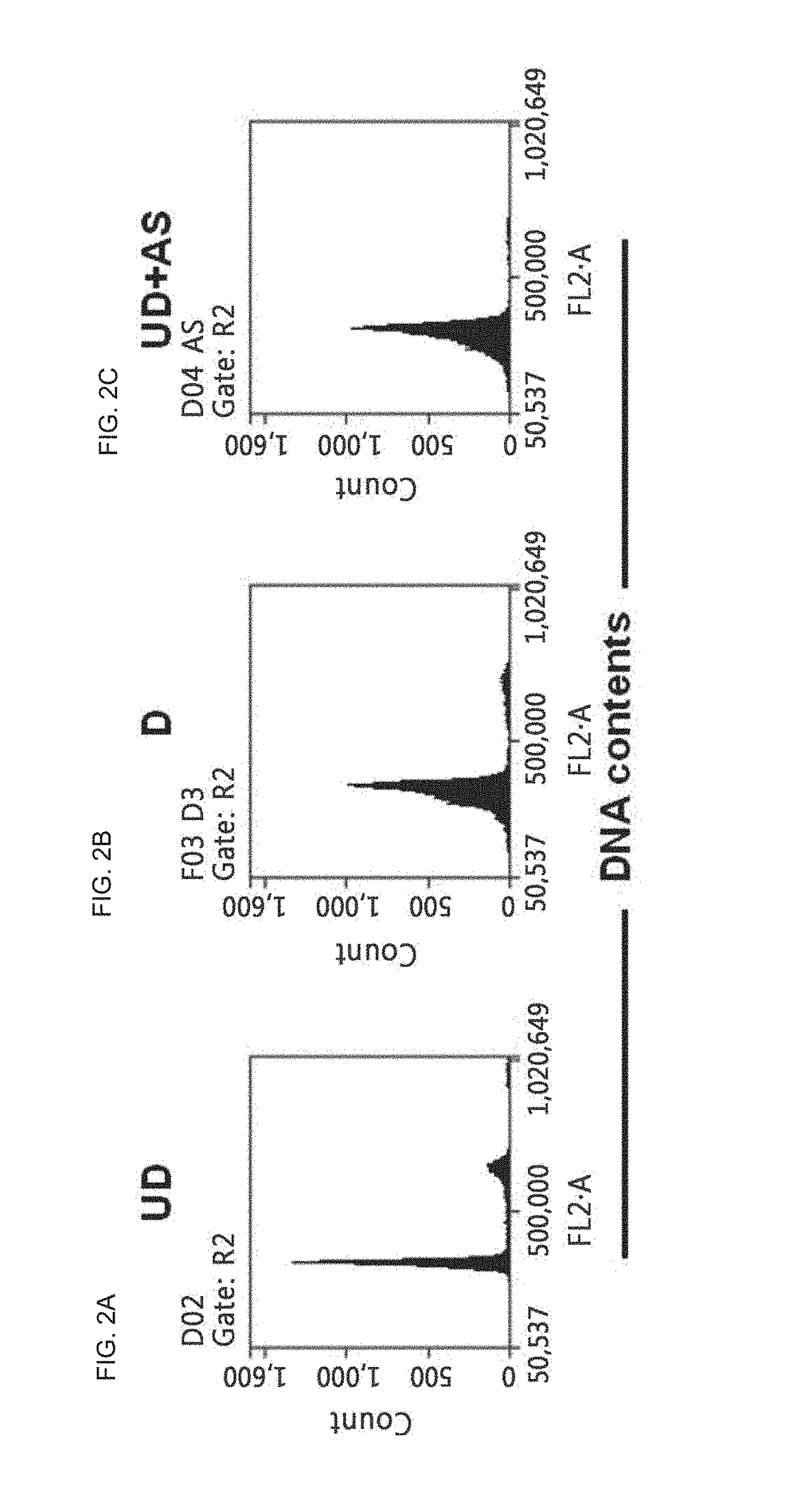Composition for inducing differentiation of multipotent neural stem cells into dopaminergic neurons and method for inducing differentiation of multipotent neural stem cells into dopaminergic neurons by using the same
a neural stem cell and multipotent technology, applied in the direction of amide active ingredients, organic chemistry, heterocyclic compound active ingredients, etc., can solve the problems of difficult treatment of parkinson's disease, damage to the motor pathways of the brain, and parkinson's disease, so as to achieve the effect of inducing neural stem cell differentiation
- Summary
- Abstract
- Description
- Claims
- Application Information
AI Technical Summary
Benefits of technology
Problems solved by technology
Method used
Image
Examples
example 1
[0102]1) Culture of Mouse Neural Stem Cells
[0103]Neural stem cells were isolated from the brain of a day 14.5 mouse embryo, treated with 10 ng / ml human basic fibroblast growth factor (bFGF) (Peprotech, Princeton, N.J.) and 20 ng / ml human epidermal growth factor (EGF) (Peprotech) in a N2 culture medium, and cultured in suspension in a 25 cm2 flask (Nunc, Pittsburgh, Pa.) for 4 days.
[0104]Neurospheres were treated with TrypLE and then separated into single cells, which were uniformly seeded into a culture dish coated with 15 μg / ml poly-L-ornithine and 10 μg / ml fibronectin. Following culture, the morphology of the cells was observed.
[0105]The N2 culture medium was Dulbecco's modified Eagle's medium (DMEM) / F12 (1:1) supplemented with 100 μM putrescine, 30 nM selenite, 20 nM progesterone, 1.55 mg / ml d-(+)-glucose, 25 μg / ml insulin, 0.1 μg / ml apo-transferrin, 0.5 mM alanyl glutamine, 100 IU / ml penicillin, and 100 ng / ml streptomycin.
example 2
iation into Dopaminergic Neurons
[0106]Mouse neural stem cells were cultured in accordance with the procedure of Example 1. To the cultured neural stem cells was added the compound represented by Formula 1 (10 μM, hereinafter also referred to as ‘AS703026’), Formula 3 (1 μM, hereinafter also referred to as ‘PD318088’), Formula 5 (10 μM, hereinafter also referred to as ‘AZD8330’), Formula 6 (1 μM, hereinafter also referred to as ‘Trametinib’) or Formula 10 (1 μM, hereinafter also referred to as ‘Refemetinib’). The cells were cultured for 4 days.
[0107]Neurospheres were treated with TrypLE and separated into single cells, which were uniformly seeded into a culture dish coated with 15 μg / ml poly-L-ornithine and 10 μg / ml fibronectin. Following culture, the morphology of the cells was observed.
experimental example 1
[0109]In this example, it was confirmed whether the differentiation of neural stem cells into dopaminergic neurons was induced.
[0110]To this end, real-time (RT) PCR analysis was performed on neuron-specific markers. On day 4 after in vitro differentiation, mRNA expression was identified. The results are shown in FIGS. 1A an 1B. The numbers in the graph indicate average values of mRNA expression levels relative to the respective controls from real-time PCR analyses in triplicate.
[0111]FIGS. 1A and 1B shows the results of RT-PCR analysis and immunocytochemical analysis of neuronal markers for the neural progenitor cells (undifferentiated; UD) cultured in Example 1, the differentiated cells (D) cultured in Comparative Example 1, and the AS703026-treated cells (UD+AS) cultured in Example 2 to determine whether neuronal differentiation factors were expressed, which is an indicative of induction of the differentiation of the cells into neurons.
[0112]As shown in FIG. 1A, the expression lev...
PUM
| Property | Measurement | Unit |
|---|---|---|
| temperature | aaaaa | aaaaa |
| culture temperature | aaaaa | aaaaa |
| culture temperature | aaaaa | aaaaa |
Abstract
Description
Claims
Application Information
 Login to View More
Login to View More - R&D
- Intellectual Property
- Life Sciences
- Materials
- Tech Scout
- Unparalleled Data Quality
- Higher Quality Content
- 60% Fewer Hallucinations
Browse by: Latest US Patents, China's latest patents, Technical Efficacy Thesaurus, Application Domain, Technology Topic, Popular Technical Reports.
© 2025 PatSnap. All rights reserved.Legal|Privacy policy|Modern Slavery Act Transparency Statement|Sitemap|About US| Contact US: help@patsnap.com



